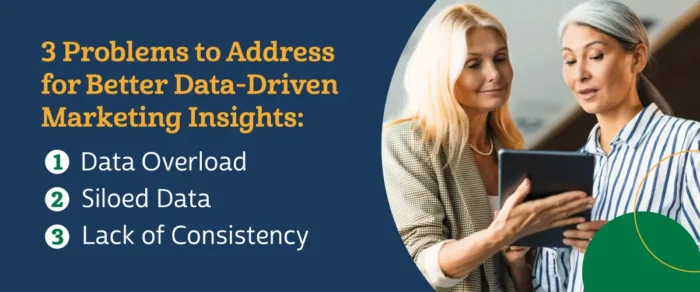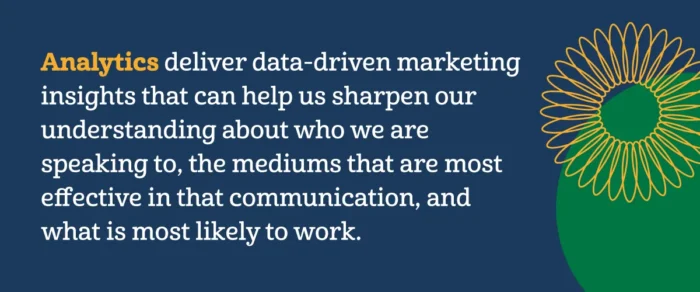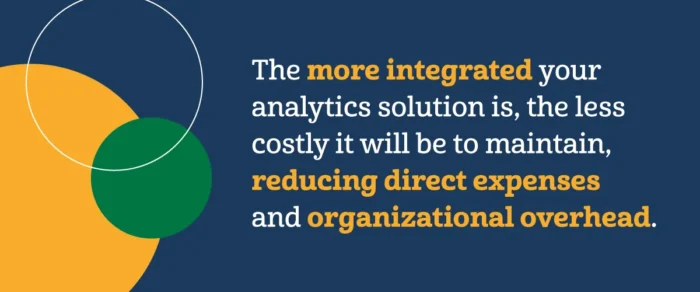As the data landscape continues to evolve, gaining actionable data-driven marketing insights is no easy feat. The rapidly expanding volume of data, combined with its fragmentation across various platforms, creates hurdles that have moved beyond the mere collection and reporting of data. Now, cross-referencing, synthesis, and analysis require high degrees of speed, confidence, and agility to gain actionable data-driven marketing insights.
The pressure compounds when shareholders and boards increasingly expect management to make data-driven decisions. They assume fast and easy access to insights across myriad systems, investments promising improvements from operational reporting and outcomes to powering various AI initiatives, as seen in many press releases.
Being in the data business, we help our partners address these issues weekly. From our standpoint, most problems can be tackled by isolating core issues. Here are our takeaways.
3 Problems to Address for Better Data-Driven Marketing Insights

- Data Overload: An overwhelming volume of data makes extracting valuable insights difficult, especially when pulling across multiple systems.
- Siloed Data: When information is siloed across platforms, it leads to a fragmented view of consumer activity that likely differs between business units, each of whom is likely to have their preferred system and ways of interpreting that data.
- Lack of Consistency: Misalignment of data definitions creates major headaches. Having a uniform definition of key data types that can be referenced back to is critical. Keeping these consistent from system to system is very important, otherwise unwanted noise gets introduced into the system and improper conclusions may be drawn.
It sounds rudimentary, but having common understanding about what you are talking about between groups and stakeholders as well as with your various vendors is imperative. It doesn’t take much imagination to see that simple misunderstandings between the differences between an authenticated, registered, or logged-in user have real ramifications when attempting to extract valid insights—especially when the extracts are coming from a variety of systems.
How to Turn Data Into Effective Marketing Insights
When nearly everything is measurable, it can be difficult to decide what to look at first, or to determine what are the big signals versus the little signals that need to be examined. We counsel our partners to:
- Implement Regular Data-Driven Strategies: Focused strategies in marketing efforts are essential.
- Prioritize Analytics Tasks: Ensure tasks drive toward measurable marketing outcomes.
- Set Measurement Targets: Agree on growth, retention, efficiency targets, and the systems used for measurement. Get agreement among stakeholders that those systems can produce solid results and refine your measurement as the data becomes available.
It is easy (and sometimes fun) to get lost in the data. When it comes to making it work, though, ensuring that you have set up your scenarios to be measurable based on objectives that are clear and actionable is the fastest way to ROI for those big investments. Keep yourself and teams focused on clearly identified outcomes and make sure everyone has agreement on what good looks like, so that you can proceed quickly.
2 Ways to Make Sure Analytics Deliver Data-Driven Insights

Analytics can be hard and lead us to places we don’t always intend to go. Marketers can get frustrated when their ideal customer profile turns out to look very different from the customer who is responding to their ads, or when a highly desired demographic seems to be slipping through the grasp of their acquisition tactics. To counter these frustrations, it’s important to keep a couple of things in mind:
- Continually Re-evaluate Tools: Different analytics tools and vendors have different strengths and weaknesses, some of which can change quickly due to evolving regulatory environments, acquisition methodology, or company ownership. Be prepared to continually re-evaluate if your internal data collection methods have changed, where you are sourcing your external data and whether both are appropriate for the question you are trying to answer now. If you find yourself getting too many anomalies for comfort, talk to your partner or others about what you are trying to do to see if there is a better, different, newer solution that may shine a light more clearly on what you are trying to understand.
- Stay Open-Minded: While we like to see our assumptions validated, we need to be prepared for the fact that sometimes our target audiences and customers are just going to look different than what we expect. This can lead us in a variety of directions to help us understand and focus on why we might not be reaching the customers we want the most, as well as what new markets may be open to what we have to offer.
In the best cases, analytics deliver data-driven marketing insights that can help us sharpen our understanding about who we are speaking to, the mediums that are most effective in that communication, and what is most likely to work. Companies that are good at this continually unlock new opportunities by finding new ways to talk to their current customers and different ways to bring new customers through the door. If your analytics efforts are not making this happen for you, have a frank conversation with your partners to see what you can do differently. The answer is in there somewhere.
Navigating Data Privacy Challenges
Data privacy has been impacting us for nearly a decade, and ongoing should be expected to accelerate for the foreseeable future. While frustrating, these impacts are rarely sudden and can be managed by working with partners to mitigate impacts and find viable solutions to emerging standards and restrictions. Marketers should note that the changes will impact their marketing insights into certain categories of customer or users.
- Understand Data Availability: Continually working with data providers and data companies to understand what is going to be available going forward versus what is available today is vital to not losing visibility into a key performance metric.
- Identify Proxies: Certain changes in data privacy will have an impact on our industries ability to measure certain activities at the scale we once had. This means that proxies need to be identified in advance of an implemented change to establish a new baseline where the variances can be understood between what existed before and after the changeover.
3 Steps to Help Optimize Your Tech Stack for Data-Driven Marketing Insights

While it’s unlikely you’ll ever find a single solution that handles all of your analytics needs, consolidating them into a workable and interoperable set of tools will increase your speed while reducing your friction. The more integrated your solution is, the less costly it will be to maintain, reducing direct expenses and organizational overhead.
- Choose Core Systems: Select core systems that will serve as systems of record for various parts of your business.
- Ensure Interoperability: Identify companies that play well with others, allowing interoperability and easy data transportability.
- Clarify Partner Roles: Be clear with your respective partners on how you are using them to implement and manage your data strategy, so that they understand where they fit and how they can best be used to solve your current and existing challenges.
Let’s Sum It All Up
Getting your data strategy aligned to answer increasingly challenging questions is not a one-time thing. The questions will change, the technology will change, and the regulatory environment will change. These changes will happen every quarter for the rest of your life.
Having an adaptable plan, plus the right partnerships in place, will help manage ever-increasing data sets, teasing out the most valuable data-driven marketing insights. In the long run, this approach will set you apart from those following marketplace trends. You’ll be glad you did it.
At Lotame, we help you understand your customers better by accessing data-driven marketing insights in smarter, faster and easier ways. Lotame Analytics help uncover the AHAs about your customers and create data-empowered campaigns — no data science degree or engineering required. Reach out to us today to learn more.


